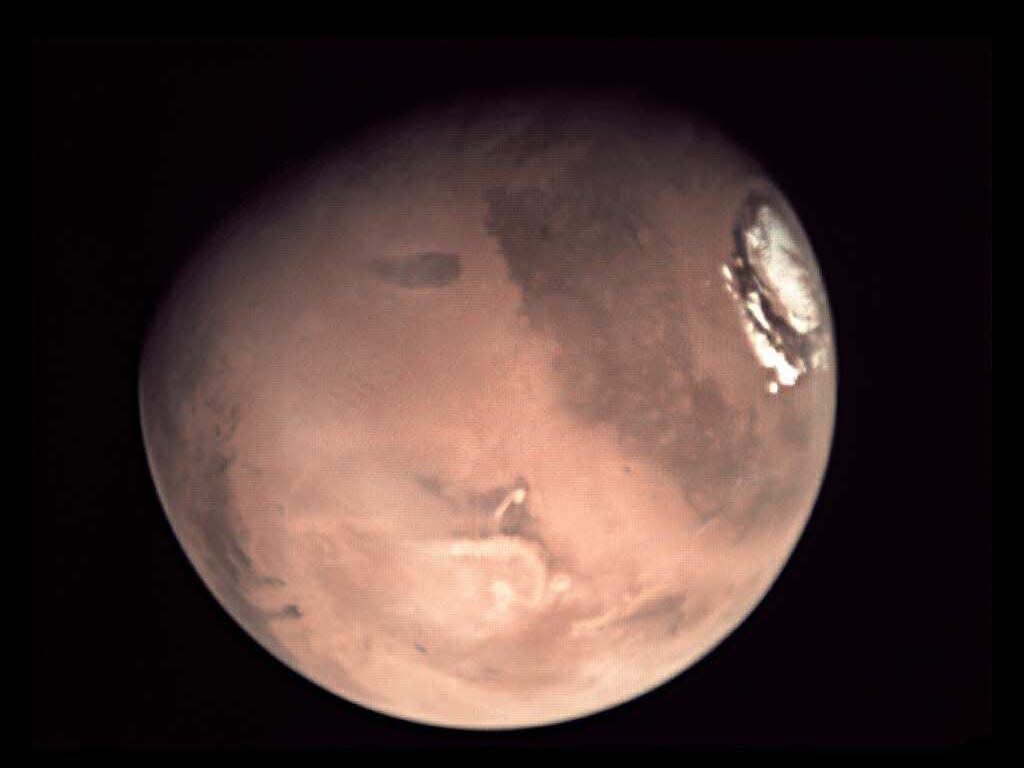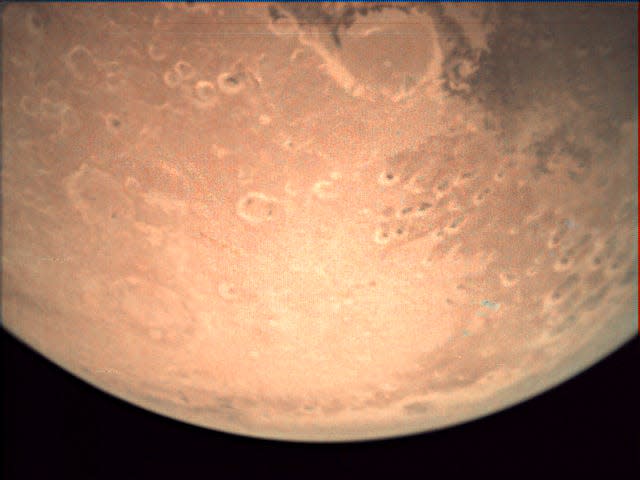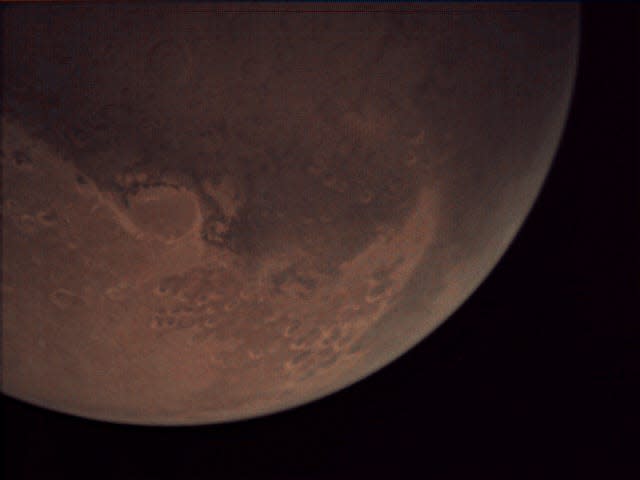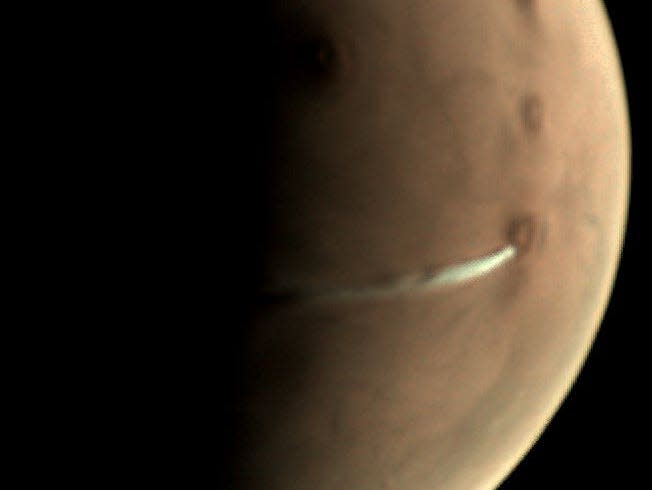First-ever livestream from Mars beamed back images from the red planet despite technical difficulties

The European Space Agency (ESA) is live-streamed images from Mars with its Mars Express satellite.
It was the first time images have been streamed in near real-time from Mars, per ESA.
The live stream experienced some technical difficulties for a brief period.
See Mars like never before.
The European Space Agency (ESA) just completed its first-ever live stream of images from its Mars Express satellite today, providing space fans with multiple close-ups of the red planet.
Here are some of the images from the live stream taken today that ESA posted on its Mars Webcam Flickr page. This first photo was taken from an altitude of about 3,900 km (2,400 miles) above Mars.

These images are being sent nearly 190 million miles back to Earth, and take about 16 minutes and 44 seconds to reach us. It's "the closest you can get to a live view from the Red Planet," ESA said in a statement.
The achievement is an engineering feat for ESA's Mars Express satellite, which was launched 20 years ago today and has been orbiting Mars for nearly as long.
This next image from today's live stream was taken during Mars Express's orbit number 24,516. That's how many times it has circled the red planet in the last 20 years.

Part of the live stream was interrupted due to inclement weather in Spain, where satellites that capture data from Mars Express live.
Still, over a dozen images were returned. You can see them all on Flickr.
Mars Express is an engineering marvel

Mars Express was never meant to be in operation this long. Its primary purpose was to record the landing of the Beagle 2 lander about 20 years ago.
But its camera continued beaming images back to Earth in batches. It has become a favorite of space enthusiasts, as the images are uploaded every couple of days to an ESA Flickr account, ESA said.

But this is the first time the agency will be attempting to stream these images live, in celebration of the probe's 20th anniversary.
The satellite isn't just there for fun. The pictures have helped scientists make discoveries about Mars.
"We developed new, more sophisticated methods of operations and image processing, to get better results from the camera, turning it into Mars Express's 8th science instrument," explains ESA's Jorge Hernández Bernal, who is part of the team analyzing these images.
"From these images, we discovered a great deal, including the evolution of a rare elongated cloud formation hovering above one of Mars' most famous volcanoes – the 20 km-high Arsia Mons," he said.

Using this picture, scientists figure out that winds hitting this dead volcano were rapidly cooling, leading to water ice condensation and clouds forming. However, why the cloud is stretched out is still a mystery, per ESA.
Read the original article on Business Insider

 Yahoo News
Yahoo News 